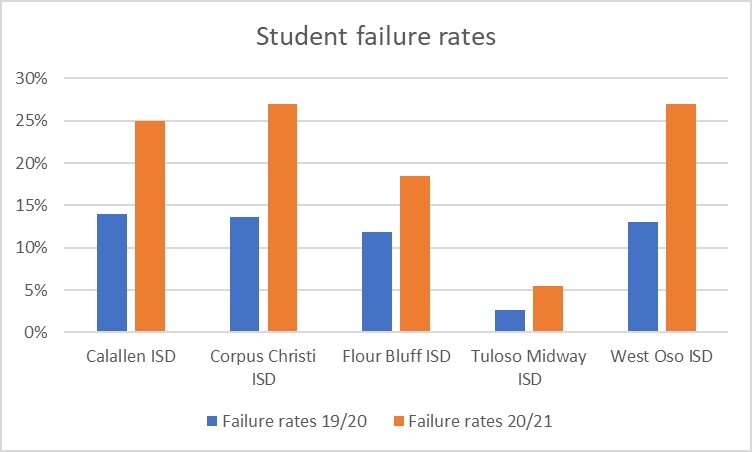CORPUS CHRISTI, Texas — We’ve seen what the COVID-19 pandemic has done to our community’s present, but the virus is also affecting its future.
Students here and across the country simply aren’t making the grade. Failure rates are up and students blame remote learning and educators agree.
Natalia Espinoza is your typical 12th grader. She’s in the W.B. Ray High School band, part of the Tex-Anns drill team, and was even homecoming queen. Natalia, however, is also part of a growing group: kids who failed a class during the pandemic.
“I was just a little disappointed in myself, I guess,” said Espinoza. “I knew I could have done better, especially being at home, too.”
When Natalia failed AP Government during the first six weeks of this school year, it was the first class she ever failed.
“I know being at home really affected it,” she said.
School administrators have seen even the most successful students struggle while learning from home.
“All our kids, not just our kids that are failing, this is the hardest year they’ve ever had,” said CCISD Executive Director for School Leadership Dr. Sandra Clement.
The numbers are staggering. A school’s failure rate is the percentage of students who fail at least one class.
For the 2019-20 school year, the first grading period failure rate in Corpus Christi's five school districts averaged 11.2%. In 2020-21, that number doubled to 22.4%, alarming educators.
“Any time kids are not as successful as we want them to be it alarms us and the flags go up,” said West Oso ISD Superintendent Conrado Garcia.

Garcia saw his district go from a 13% failure rate to 27%. It's a number he’s disappointed by, but didn't surprise him, he said.
But while the overall failure rate more than doubled, WOISD bucked the trend in one respect.
West Oso’s elementary schools saw their failure rates drop by nearly half. Garcia credits his teachers but says there’s also a simple explanation.
“They have parents sitting next to them, helping them with their work,” Garcia said of elementary school students.
Educators believe that changes when kids reach middle school age. Many parents work, leaving middle and high school kids alone.
“If there’s no one to monitor them then it’s hard,” said Clement.

Failure rates among secondary students saw the biggest jumps from last year to this year. CCISD, the city’s largest district, also had the highest failure rates among its middle and high school students. Clement says for those kids, parents need to get involved.
“Ensure that they get online,” said Clement. “They’ll see the teacher live in their class and they interact with the teacher, they communicate with the teacher.”
But for many kids, Zoom classes aren’t cutting it. Many simply need the one-on-one interaction which face-to-face learning provides.
“Not everybody is always comfortable on the camera,” said Espinoza.
Natalia says her mother started cracking down after she failed a class. It worked, because since then her grades are back up, in spite of her still learning remotely. Educators believe she’s one of the lucky ones.
“Bottom line, absolute bottom line, they need to be in school,” said Garcia.
“We know that’s the best way that kids learn,” added Clement.



